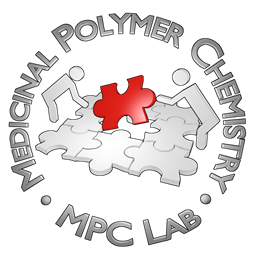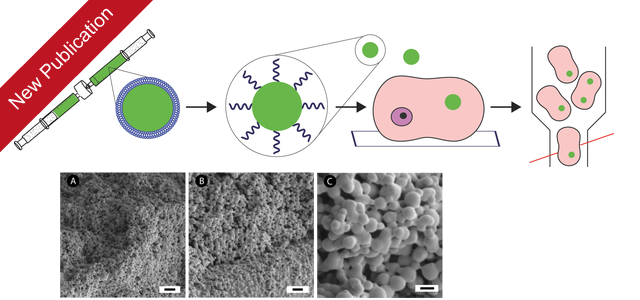Our newest publication indroduces liposomal templating for the fabrication of poly(vinyl alcohol) hydrogel particles and their investigation for drug delivery applications. The article entitled “Liposomal Templating, Association with Mammalian Cells, and Cytotoxicity of Poly(vinyl alcohol) Physical Hydrogel Nanoparticles” was published in Particle & Particle Systems Characterization.
Abstract
The assembly, cellular internalization, and cytotoxicity of nanoparticles based on physical hydrogels of poly(vinyl alcohol) (PVA) are reported. PVA nanoparticles are assembled using a liposomal templating technique followed by removal of the lipids using isopropanol, a process that requires the presence of a custom-made block copolymer, poly(vinyl alcohol-b-vinyl pyrrolidone), to avoid aggregation of the nanoparticles. Polymer hydrogelation is induced via incubation in aqueous isopropyl alcohol solution, which results in PVA hydrogel nanoparticles (PVA HNP) with excellent colloidal stability and stability towards disintegration over at least 24 h. Pristine PVA HNP are found to be remarkably stealth-like and exhibit negligible cellular internalization. This feature is likely inherent with the low fouling nature of PVA and makes PVA HNP attractive for targeted drug delivery with a low level of association with non-targeted cells and tissues. Blending PVA with varied amounts of collagen results in colloidal hydrogel particles with a well pronounced tendency towards association with mammalian cells, specifically hepatocytes and endothelial cells. The association of PVA HNP elicits minimal changes in cellular proliferation, making these novel hydrogel particles convenient tools for drug delivery applications and creation of implantable artificial organelles and sensors.

